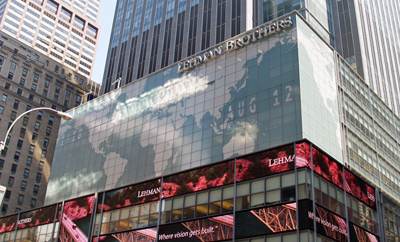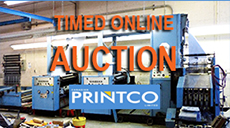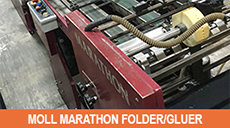
|
|
| Home › Articles › Here |
  |

|
||||||||||||||
| By: Nick Howard | Date: August 2010 | Contact the Author |
|||||||||||||||
| Northern Rock’s former chief Adam Applegarth is not
a household name in North America, but he is
widely recognized across the United Kingdom and
most of Europe as a principal architect of the recent
global economic meltdown. Almost one year before
Wall Street’s late-2008 financial collapse, Applegarth
told a British news program that “It started on the 9th
of August (2007) when the world changed.” At the young age of 39, Applegarth was named as Chief Executive of Northern Rock, which he proceeded to meld into a bank of mortgage specialists, particulary by working through the open market. By mid-2007, Applegarth’s strategy had turned Northern Rock into the fifth-largest mortgage provider in Britain. Then on August 9, 2007, it became public knowledge that Applegarth and Northern Rock needed to be rescued with £25 billion in emergency funding from the Bank of England. As a result, Applegarth created the first run on a bank – when a large number of customers withdraw their deposits because they believe a bank is about to become insolvent – that England has seen in over 100 years. Beyond the TV reports showing hundreds of people queuing up outside of Northern Rock branches, like most North Americans, I paid very little attention to Britain’s 2007 bank run. |
|||||||||||||||
 |
|||||||||||||||
| August 9 held no more importance to me than any
other typical summer day in 2007. On September 16,
however, everything changed in terms of my business
and, indeed, the entire world of printing. But this was
September 2008 almost a full year after Northern Rock’s
bank run, when Lehman Bros. announced its pending
collapse. Within days, most major U.S. financial institutions
announced they too were on the brink because
of their exposure to packaged subprime loans and
credit default swamps. Within days of the 2008 financial collapse in New York, a global crisis began developing around the world, with a number of bank failures across Europe and massive reductions in the value of equities and commodities worldwide. America, while certainly not innocent, became a whipping boy for the Western World’s substandard banking. I can understand why so many fingers were pointing at the U.S., particularly under our own North American news bias, but I also feel it is a huge business mistake to underestimate the power of the U.S. economy, after so much of the world continues to throw mud. |
|||||||||||||||
 |
|||||||||||||||
|
Back to the top Western Europe in particular has taken to battering the United States as the cause of economic ruin, without the near-future ability to righten their economy. America is a nation of entrepreneurs who look at what can be and not what is. Excess and overindulgence are now seen as key character traits of America, where people super-size everything to make an example of their wealth. But corporate malfeasance and ludicrous salary bonuses are commonplace everywhere around the globe. Blame America? I don’t think this is fair or accurate. The world banking crisis is not just an American banking crisis. There are plenty of financial enterprises in the rest of the world that were just as eager to play with all the cheap cash and credit. Europeans specifically should consider that this is a worldwide banking crisis and not just one Made in America. Sure it can be said that the United States played a major role in allowing cheap, lowinterest money to be so readily available. But this is largely a byproduct of what is so good about America. Yes – Americans think big. They refuse to accept what most people in Europe refer to as just the way it is. Americans will always find a way to make things better, bigger and cheaper. The past two years has certainly been chaotic and perilous for many companies, particularly for printers, but we have really just been dealing with a correction in the global economy. We have seen these U.S. corrections come fast and furious in the past, most recently with the Dotcom crash around 2001/2002. The 2008 Wall Street crisis, however, was an amplified U.S. economic correction because of how tightly the world’s economies are intertwined. Experts have been talking about globalization for years, and certainly some of you have seen its effects in your printing businesses, but still in 2008 the world was not prepared for a simultaneous global financial meltdown. You should not, however, expect Americans to start dreaming on a smaller scale. Their spirit of individualism will reign once again, in new and always innovative ways of conducting business. Europe and Japanese business are often by-products of American innovation. In the case of printing machinery, these countries react and produce what America wants, because Americans will accept what other countries often struggle to conceptualize. In most major industries, no matter where its manufacturers are located on the globe, it is America taking the lead. In the printing industry, for example, presses were built for years without continuous dampening. It was Harold Dahlgren, an American, who developed a continuous dampener that added huge operational advantages to the printing press. Even while the powerful German manufacturers preached about the advantages of cloth-covered dampeners, here was a guy, Dahlgren, who re-invented printing as we know it. Now every company that makes machinery has adapted a form of Dahlgren’s unique and clever design. From CTP to post-press, there are signs of America’s fingerprints everywhere. Several key labour-saving tools on presses trace their roots back to American printing. Even Heidelberg, the world’s largest press maker, particularly when viewed in terms of sheetfed press installations, paid close attention to America for some of its strongest technological enhancements. Remember the Heidelberg CD was originally launched as a carton press, but quickly became a paper press in America. Goss, Cottrell, Harris, Sheridan are just a few examples of America’s ingenuity. There are extraordinary features on the Harris Lithotronic that are still current today. That’s almost 40 years ago! |
|||||||||||||||
|
|||||||||||||||





